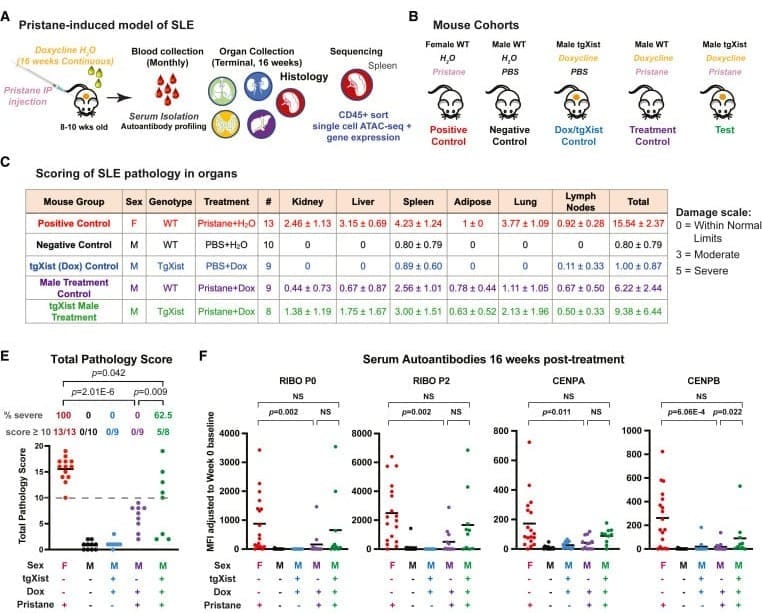80% of patients with an autoimmune disease are women, we are now beginning to understand why
Approximately 80% of people with autoimmune diseases are women. We may now understand why this extreme gender bias exists.

You're probably aware that biologically female individuals have two X chromosomes.
You might not be aware that one of those X’s is turned off in every cell in a female’s body.
The reason for this is that the X chromosome is full of genes!
It’s so important that every human needs at least one to live, and that includes the boys!
But, too much of a good thing can be a problem, and in females, one of these X’s is turned off in a process known as X-inactivation.
The key molecular mechanisms behind this process were finally revealed in the early 90’s.
And X-inactivation is the work of a long non-coding RNA, the X-inactive specific transcript, or Xist for short.
Xist is able to turn off one of the X’s by recruiting a bunch of RNA binding proteins to itself which in turn causes the X that expresses Xist to shrivel up into a little ball that can’t be accessed for gene expression.
It’s a pretty elegant solution to the two X problem!
But you might be asking what this has to do with autoimmune diseases?
Well, they’re predominantly a female problem, and it’s especially bad in Lupus where 90% of patients are female
The conventional thinking was that since autoimmune diseases usually appear when women reach child bearing age, they were the result of hormonal changes.
But, the researchers in today’s paper hypothesized that X-inactivation also contributes, and that antibodies against the Xist RNA binding proteins play a role in the development of disease.
This isn’t a crazy idea!
It has been known for some time that many patients with autoimmune diseases have high titers of antibodies against RNA binding proteins!
To test this hypothesis, the authors used a mouse strain where females, and not males, are very susceptible to developing a lupus-like disease after exposure to a chemical (Pristane).
But, to test whether this susceptibility is the result of autoimmunity to RNA binding proteins and X-inactivation, they engineered MALE mice to carry a fake chromosome where they could control the expression of Xist with a drug (doxycyclin)!
The results of this experiment can be seen in the figure below. A) Is an experimental overview, B) Explains the different treatments, C) Shows similar levels of organ damage in treated females and males where Xist was induced, but not in controls, E) Is a graphical summary of the table, and F) Measures the presence of Lupus associated autoantibodies.
Taken together, it really does appear that autoimmunity as a result of X-inactivation contributes to the sex biased development of autoimmune diseases in females.
While we can’t prevent or stop X-inactivation, hopefully we can use this new knowledge to develop improved or targeted therapies for these diseases in women!
Read the full issue of Omic.ly Premium 11


